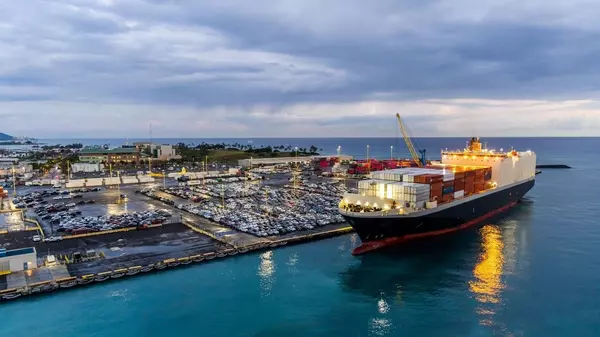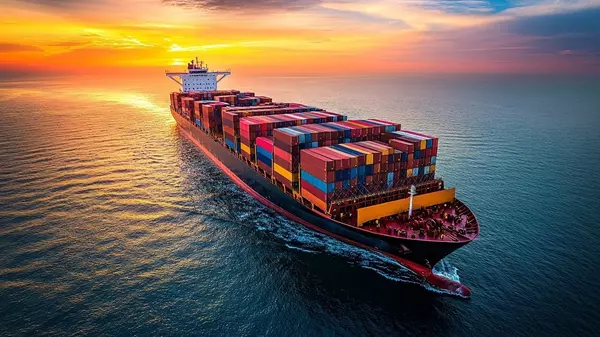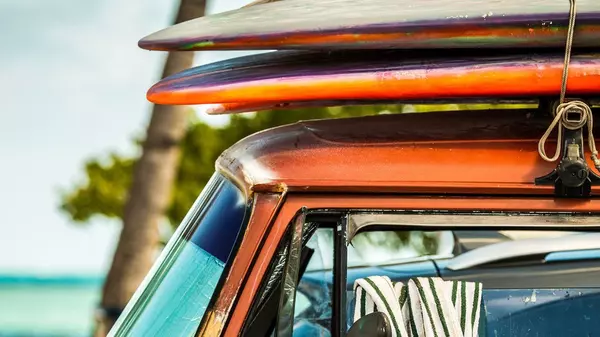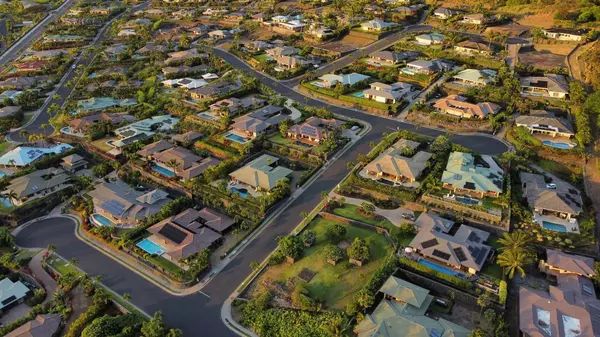Thinking About Moving to Hawaii?
Relocating to Hawaii—especially to the Big Island—is a dream for many, but it’s also a major life decision that comes with unique considerations. Whether you're drawn by the slower pace, stunning natural beauty, or the promise of a fresh start, making the move across the Pacific requires careful planning, patience, and the right information.
From deciding what to bring (and what to leave behind), to navigating shipping logistics, housing options, and even pet quarantine rules—there’s a lot to think through. You’ll need to choose whether to pack and ship your belongings yourself, hire a full-service moving company, or start fresh with just a few essentials.
209,790
POPULATION (2024)
10
CLIMATE ZONES
4,028
SQ MILES
5
VOLCANOES

No Worries. You're Not Alone in the Process.
There’s a wealth of information available, and this page is designed to help you cut through the noise. Here, you’ll find answers to the most common relocation questions, practical tips based on local experience, and helpful resources to make your transition as smooth as possible.
Take a deep breath, go for a walk, and start imagining what life could be like here. When you’re ready to make the leap, a thoughtful plan (and a good local guide) will go a long way in making your Big Island move a success.
I know the journey firsthand—nearly 25 years ago, I relocated to the Big Island myself. From researching and purchasing a home remotely, to coordinating container shipping, navigating Hawaii’s pet quarantine process for my two dogs, and even shipping my car—it was a big leap, but one of the best decisions I ever made. If you're considering making the move, I’d be happy to share my experience and help guide you through the process.
Feel free to reach out—I'm here to help.
Moving to the Big Island
Relocating to Hawaii—especially the Big Island—can be a dream come true, but it’s important to approach the move with realistic expectations and thoughtful planning. Hawaii offers an incredible lifestyle, but it also comes with unique challenges that differ significantly from those of mainland living.
Key Considerations Before Moving:
Cost of Living:
Hawaii has one of the highest costs of living in the United States, driven by high housing, grocery, energy, and shipping costs. Budget accordingly, especially when moving from the mainland.
Island Lifestyle & Pace:
Life in Hawaii tends to be slower-paced and community-oriented. It’s a more relaxed lifestyle, but one that values respect, patience, and cultural sensitivity.
Housing Availability:
Inventory on the Big Island can be limited depending on location and budget. It’s wise to research neighborhoods ahead of time, especially factors like lava zones, rainfall, commute distance, and elevation.
Job Market & Remote Work:
Unless relocating with a job already in place, it's essential to research employment options. Many newcomers work remotely, particularly in the tech or professional services sectors.
Shipping & Logistics:
Shipping vehicles, household goods, and even pets requires planning. Costs and regulations vary, so begin gathering quotes as soon as possible. See Hawaii Pet Guidelines →
Community & Culture:
Hawaii is rich in history and tradition. Taking the time to understand local customs, supporting local businesses, and engaging respectfully goes a long way toward building community connections.
Healthcare & Schools:
Ensure you evaluate your proximity to healthcare services, especially in rural areas, and research available school options if you are moving with children.
Climate & Environment:
The Big Island includes diverse climates across its regions. Some areas are hot and dry, while others are cool and rainy. Microclimates play a big role in daily life.
Helpful Resources:
- Guide to Moving to Hawaii
- Hawaii Pet Relocation Info
- Contact Penn for Personalized Relocation Guidance
Each Hawaiian island offers a distinct lifestyle, and the best choice depends on your personal priorities—whether it’s affordability, employment, outdoor access, or a close-knit community.
Big Island (Hawai‘i Island):
- It is the most geographically diverse, with multiple climate zones.
- More affordable real estate and room to spread out.
- Ideal for those seeking off-grid living, agriculture, or a slower-paced lifestyle.
- Popular areas: Kailua-Kona, Waimea, Hilo, Volcano, and Ocean View.
- Explore Big Island Homes for Sale »
O‘ahu:
- Most urban and developed, home to Honolulu and Waikiki.
- Best for those needing strong job markets and city amenities.
- Real estate and traffic are more intense than on other islands.
Maui:
- Known for its beauty and resort lifestyle.
- Appeals to remote workers, retirees, and second-home buyers.
- Higher cost of living and limited inventory in many areas.
Kaua‘i:
- Rural and peaceful with lush natural surroundings.
- Ideal for those prioritizing privacy, quiet, and outdoor adventure.
- Limited job market and fewer services.
Moloka‘i & Lāna‘i:
- Small populations and minimal infrastructure.
- Best for those seeking an unplugged, off-the-grid lifestyle.
Key Considerations When Choosing:
- Visit before you move—each island has a distinct rhythm and culture.
- Consider your work situation (remote, in-person, retired).
- Understand climate, access to services, and real estate availability.
Helpful Resources:
Shipping your household goods to Hawaii typically involves ocean freight, though air freight is available for small or time-sensitive items. Most new residents use container shipping services from the U.S. West Coast to the island where they’re relocating.
Common Shipping Methods:
- Full Container Load (FCL): Your own 20- or 40-foot container, delivered to your mainland address and shipped directly to a Hawaii port. Services like Matson and Pasha Hawaii offer reliable FCL options.
- Less than Container Load (LCL): A shared container with other customers—more cost-effective if you’re not shipping a full household.
- Air Freight: Ideal for small, high-value, or urgent shipments. Companies like Aloha Air Cargo and Hawaiian Air Cargo provide inter-island and mainland-to-Hawaii services.
Key Tips:
- Obtain quotes from multiple licensed freight forwarders and moving companies with experience in Hawaii relocations.
- Allow at least 2–3 weeks for ocean freight delivery, and plan for delays during busy seasons.
- Pack and label items carefully, and consider insurance for high-value goods.
- Storage options may be necessary if your new home isn’t move-in ready upon arrival.
Helpful Resources:
Yes—shipping your car to Hawaii is a common part of the relocation process. Most vehicles are shipped via ocean freight from major West Coast ports such as Oakland, Long Beach, or Seattle/Tacoma.
How It Works:
- Book with a reputable carrier such as Matson or Pasha Hawaii.
- Prepare your vehicle by removing personal items, cleaning the interior/exterior, and ensuring it’s in good working order.
- Provide required documentation, including your vehicle title, current registration, government-issued ID, and any lienholder authorization if applicable.
- Pick up the vehicle at the port on arrival—typically in Hilo or Kawaihae for the Big Island.
Cost & Timeline:
- Expect to pay between $1,200 and $2,000, depending on your departure port and vehicle type.
- Transit time is usually 7–14 days once the vehicle is on the ship.
- After arrival, you'll need to complete Hawaii vehicle registration and pass a Hawaii safety inspection.
Helpful Resources:
Yes—the Big Island has a variety of quality public, charter, and private schools. While options differ by region, families who research and plan ahead can find strong educational environments that suit their children’s needs.
Public Schools:
- Public schools in Hawaii are managed by the Hawaii Department of Education (HIDOE).
- Performance varies by area, but schools in Waimea, Hilo, and Kailua-Kona are generally well regarded.
- Use the HIDOE School Finder to locate schools by district.
Public Charter Schools:
Charter schools offer specialized programs, smaller class sizes, and more flexibility than traditional public schools. Notable options include:
- Waimea Middle Public Conversion Charter School – Serving grades 6–8 with a focus on place-based learning.
- Ka ʻUmeke Kā‘eo – A Hawaiian immersion charter school in Hilo for grades Pre-K to 12.
- Innovations Public Charter School – Located in Kailua-Kona, offering a progressive K–8 curriculum.
- Hawai‘i Academy of Arts and Science (HAAS) – A PreK–12 charter school in Pāhoa, blending arts, science, and technology.
- West Hawai‘i Explorations Academy (WHEA) (Kailua-Kona) – A highly regarded STEM-focused public charter school for grades 6–12 offering project-based, outdoor learning.
View the complete list on the Hawaii State Charter School Commission website.
Private Schools:
Several respected private and parochial schools are located across the island:
- Parker School – A K–12 independent college-preparatory school in Waimea.
- Hawai‘i Preparatory Academy (HPA) (Waimea) – Renowned day and boarding school for grades K–12 with strong academics, athletics, and outdoor education.
- St. Joseph School – A Pre-K–12 Catholic school in Hilo.
- Kamehameha Schools – Hawaiʻi Campus – A Hawaiian culture-based private school in Keaʻau, serving grades K–12.
Tips for Families:
- School commute times vary, especially in rural areas, where location matters.
- Some charter and private schools have waitlists or admissions processes, so apply early.
- Use GreatSchools.org to read parent reviews and view performance data.
Helpful Resources:
Healthcare on the Big Island is steadily improving, though it can still feel limited compared to larger metropolitan areas. Services vary by region, with more comprehensive care available in Kailua-Kona, Waimea, and Hilo. Residents in rural areas may need to travel for specialized care or procedures.
Hospitals & Medical Centers:
- Kona Community Hospital (Kealakekua) – The primary hospital serving West Hawaii, offering emergency care, inpatient services, and general surgery.
- Hilo Medical Center (Hilo) – The largest hospital on the island, providing more advanced services, including a stroke center and intensive care unit.
- North Hawai‘i Community Hospital (Waimea) – A full-service hospital affiliated with the Queen’s Health System.
Kaiser Permanente in West Hawaii:
- Kaiser Permanente currently operates clinics in Kailua-Kona and Waimea, offering primary care, lab services, and telehealth.
- The new Kaiser Kona Medical Office Building is currently under construction near Kealakehe Parkway in Kailua-Kona, with an expected opening in 2026. This expanded clinic will offer additional specialty care, imaging, and outpatient services, greatly improving healthcare access for West Hawaii residents. Learn more from Kaiser Permanente »
Specialty Care & Limitations:
- Many specialists (e.g., cardiology, oncology, dermatology) rotate between islands or visit part-time. Wait times can be longer than on the mainland.
- For complex or urgent specialty care, some residents travel to O‘ahu, which has larger hospitals and specialists at Queen’s Medical Center or Straub.
Insurance & Telehealth:
- Hawaii offers a strong network of insurance providers, including HMSA (Blue Cross Blue Shield), Kaiser Permanente, UHA, and HMAA.
- Telemedicine has expanded, particularly in areas such as mental health and follow-up visits, helping to bridge geographic gaps.
Tips for New Residents:
- Establish care early, especially if you have ongoing health needs.
- If you live in a rural area, plan ahead for prescription refills and lab visits.
- Emergency services are available across the island, but response times may vary in remote regions.
Helpful Resources:
Finding a long-term rental on the Big Island can be challenging due to the limited inventory, especially in high-demand areas such as Kailua-Kona, Waimea, and Hilo. Planning ahead and understanding the local rental landscape is crucial, especially if you're relocating without purchasing a home immediately.
Where to Start Your Search:
- Local Property Management Companies: Work with established firms that specialize in long-term rentals. Reputable names include:
- MLS-Based Search Tools: Some real estate agents (including myself) have access to rental listings not publicly advertised.
- Craigslist & Facebook Marketplace: These can yield results, but be cautious—verify listings and avoid sending deposits without proper vetting.
- Zillow & Realtor.com: While better for sales, these sites sometimes feature listings for long-term rentals.
Tips for Securing a Rental:
- Act Quickly: Desirable rentals go fast, especially in West Hawaii. Be ready to apply with references, proof of income, and possibly a credit report.
- Understand What’s Included: Some rentals include utilities, yard care, or furnishings. Always clarify terms before signing.
- Be Flexible on Location: Expanding your search to areas like Kealakekua, Captain Cook, or Puna may offer more options and affordability.
- Consider a Temporary Option First: Some newcomers secure a 3–6 month furnished rental to get settled and explore neighborhoods before committing to a long-term arrangement.
Common Challenges:
- Pet Restrictions: Many rentals have strict no-pet policies or additional deposits.
- High Demand in Kona & Waimea: Inventory is especially tight in these areas—start your search as early as possible.
- Scams: Always confirm legitimacy by viewing the property or working through a licensed manager or agent.
Helpful Resources:
While Hawaii does not offer broad-based relocation incentives for individuals moving from the mainland, there are limited programs and employer-based benefits that may apply in certain situations, especially for healthcare professionals, educators, or remote workers.
What to Know About Moving Incentives:
1. Employer-Based Relocation Assistance:
- Some employers in Hawaii, particularly in healthcare, government, and education, offer relocation packages that may include airfare, moving costs, or temporary housing.
- In-demand roles on the Big Island—such as nurses, physicians, teachers, and skilled tradespeople—may be eligible for hiring bonuses or relocation support.
2. Remote Work Incentive Programs:
- Although most state-sponsored programs are not currently active, temporary incentive programs like “Movers & Shakas” have been offered in the past to attract remote workers to Hawaii.
- These programs sometimes include subsidized housing, coworking memberships, and community integration opportunities. Movers & Shakas may relaunch in the future.
3. Native Hawaiian Benefits:
- Those with verified Native Hawaiian ancestry may be eligible for housing and land opportunities through the Department of Hawaiian Home Lands (DHHL).
- These benefits are available only to qualified individuals and require an application and approval process.
4. Hawaii County-Specific Programs:
- While the County of Hawai‘i does not currently offer financial relocation incentives, it does provide homebuyer education programs and affordable housing initiatives for qualified residents.
- Local programs change frequently and are often based on income or occupation. Check with the County of Hawai‘i Office of Housing for current offerings.
5. Federal & Military Relocation Support:
- Military families assigned to bases in Hawaii (e.g., Pohakuloa Training Area) receive standard PCS (Permanent Change of Station) benefits, including full relocation support.
Helpful Resources:
Hawaii consistently ranks as one of the most expensive states in the U.S., and the Big Island is no exception. However, the cost of living varies significantly by island and lifestyle, and many residents find ways to adapt by living more simply and locally.
Key Cost Factors:
Housing:
- Housing is the largest expense. While the Big Island is generally more affordable than O‘ahu or Maui, prices vary by location.
- As of 2025, the median home price on the Big Island is around $ 500,000–$ 700,000, but West Hawaii homes are well above $1-Million.
- Long-term rentals typically range from $1,800 to $5,000 per month, depending on location, size, and amenities.
Utilities & Services:
- Electricity is expensive, especially without solar. Expect to pay $200–$500 per month, depending on usage.
- Internet and basic cable packages typically cost $100–$150 per month in most areas.
- Water and trash service vary by district (some areas rely on catchment systems or private hauling).
Groceries & Food:
- Food costs are 30–50% higher than the mainland averages due to shipping costs.
- Shopping at local farmers markets, Costco (Kailua-Kona), and growing your own food can help reduce costs.
Transportation:
- Gas prices tend to be $1–1.50 higher per gallon than on the mainland.
- Vehicle registration and safety inspection fees are moderate but required annually.
- Due to limited public transportation, most residents rely on personal vehicles.
Healthcare:
- Health insurance is required by law for employers and residents.
- Out-of-pocket costs can be higher in rural areas due to limited providers and the need for off-island specialist travel.
Ways to Offset Costs:
- Utilize solar energy and rainwater catchment where feasible.
- Buy local produce and goods.
- Consider living at higher elevations to reduce cooling needs.
- Explore tax credits available to residents, particularly those installing renewable energy systems.
Helpful Resources:
Yes—if you establish residency in Hawaii, you’re required to obtain a Hawaii driver’s license within 30 days of moving to the state. This applies whether you're relocating permanently or purchasing a home and spending a significant amount of time on the island.
Who Needs to Convert Their License:
- New Residents who claim Hawaii as their primary residence (e.g., registering to vote, enrolling children in school, or applying for state benefits).
- Vehicle Owners who plan to register a car in Hawaii must have a valid Hawaii license.
- Part-Time Residents who live in Hawaii for several months per year are not typically required to change their license—unless they meet criteria for residency.
How to Get a Hawaii Driver’s License:
- Surrender Your Out-of-State License at a local driver licensing office.
- Provide Required Documents, including:
- Proof of legal presence (passport or birth certificate)
- Social Security number
- Proof of Hawaii residency (utility bill, lease, etc.)
- Pass a Vision Test (written and road tests are waived in most cases if you have a current, valid license).
- Pay Fees (typically $20–$40, depending on license term and location).
Where to Apply on the Big Island:
- Kona Driver License Office – Located in Kona Commons.
- Hilo Driver License Office – Located at Aupuni Center.
- Appointment recommended via the Hawaii County Licensing Division.
Vehicle Registration Note:
If you bring your vehicle from the mainland, you’ll also need to complete a safety inspection, register it locally, and pay Hawaii registration fees.
Helpful Resources:
- Hawaii County Driver Licensing Info
- Hawaii DOT License Requirements
- Guide to Moving to Hawaii »
- Contact Penn for Relocation Help.»While it’s possible to purchase a condo without a buyer’s agent, having professional representation is highly recommended—especially in Hawaii, where real estate laws, ownership structures, and condo-specific rules differ from the mainland.
Why Work with a Local Agent:
Understanding Leasehold vs. Fee Simple:
A local agent can help you avoid surprises by explaining the legal and financial differences between these two ownership types, which are more common in Hawaii than elsewhere.
Guidance on HOA Rules, Fees & Restrictions:
Your agent will help you review pet policies, vacation rental rules, reserve funding, and other important details before submitting an offer.
Expert Navigation of Local Escrow & Title Process:
Hawaii’s real estate system has unique steps, timelines, and regional customs. A knowledgeable agent ensures nothing is overlooked.
Access to Off-Market & Upcoming Listings:
Many luxury and investment properties are not publicly listed. Agents often have insider access to these opportunities.
Contract Negotiation & Due Diligence:
Your agent works to protect your interests, helps coordinate inspections, reviews condo documents, and ensures key deadlines are met.
Helpful Resources:
Helpful Resources
RELOCATING TO THE BIG ISLAND

Matson Shipping
Matson is the leading ocean freight carrier for shipping household goods, vehicles, and containers to Hawai‘i. Trusted by thousands of movers each year for reliable service from the mainland.

Pasha Hawaii Shipping
Pasha Hawaii specializes in roll-on/roll-off and container shipping services for vehicles and personal belongings. A convenient option for relocating your car or cargo to the islands.

Hawaii Pet Quarantine
Learn about Hawaii’s pet import requirements, quarantine programs, and how to prepare your pet for a smooth arrival. This official site provides step-by-step guidance, forms, and timelines for the process.

Ship a Car to Hawaii
I've had recent experience with this company on numerous occasions, both personally and while helping clients. Full-service car shipping company coordinating pickup and delivery from anywhere in the USA to Hawaii.

Search Big Island Homes
Start exploring current listings of homes and condos across the island to get a feel for prices, neighborhoods, and what fits your lifestyle. It’s a great first step toward making your move a reality. Be sure to contact Penn for additional guidance.

Reach Out for Help
I’ve been through the relocation process myself and have guided countless clients in making a smooth transition to island life. Feel free to reach out—I'm happy to discuss your options, answer any questions, and help you get started.

